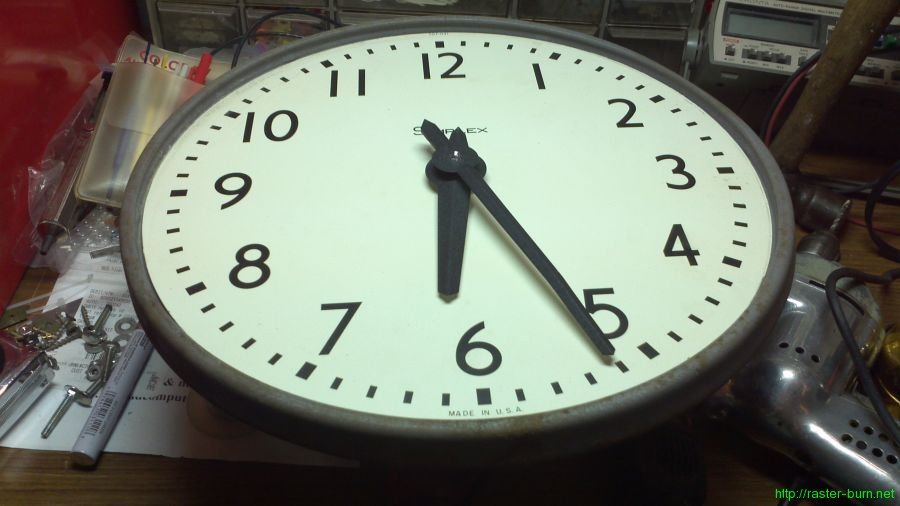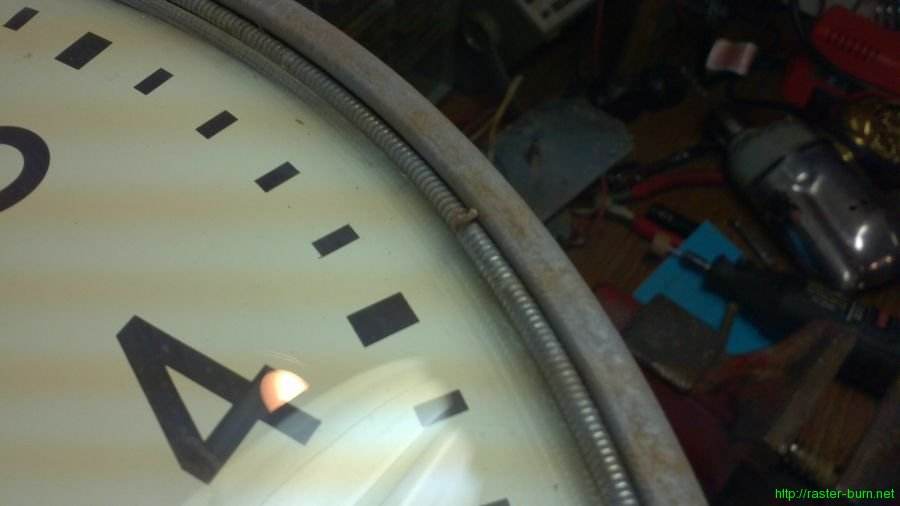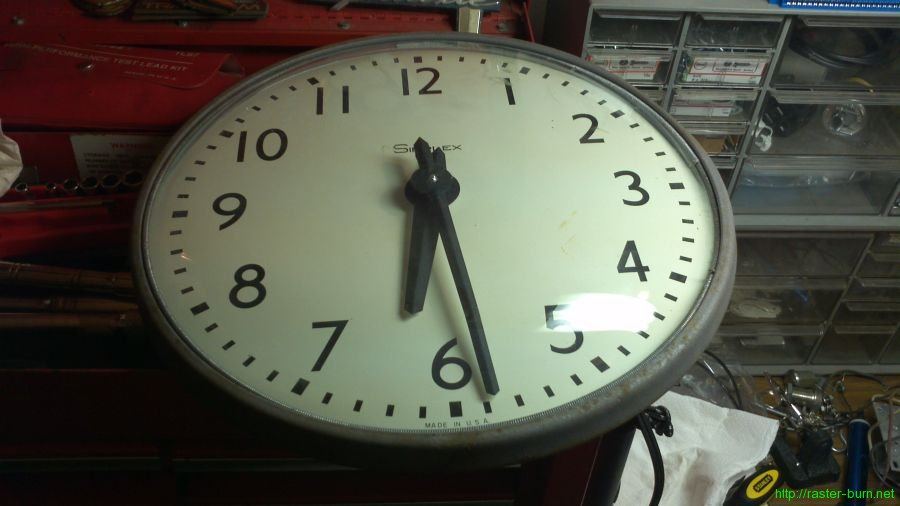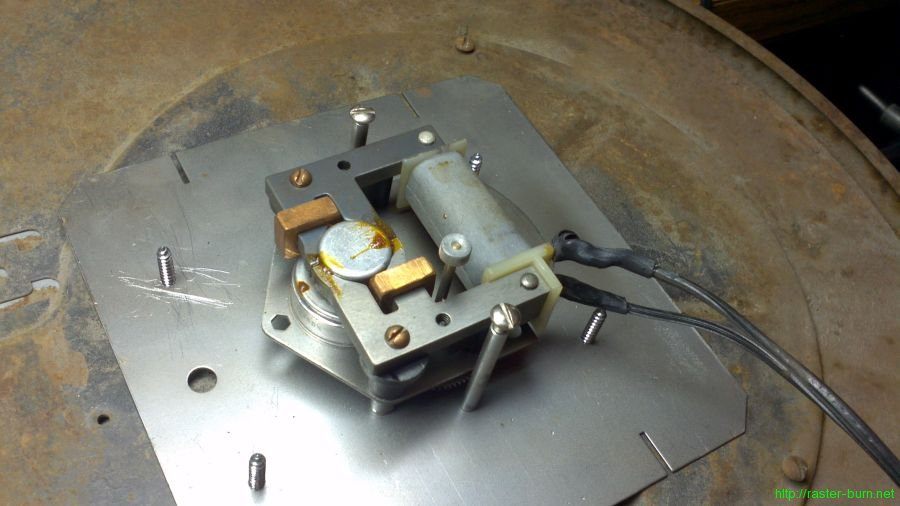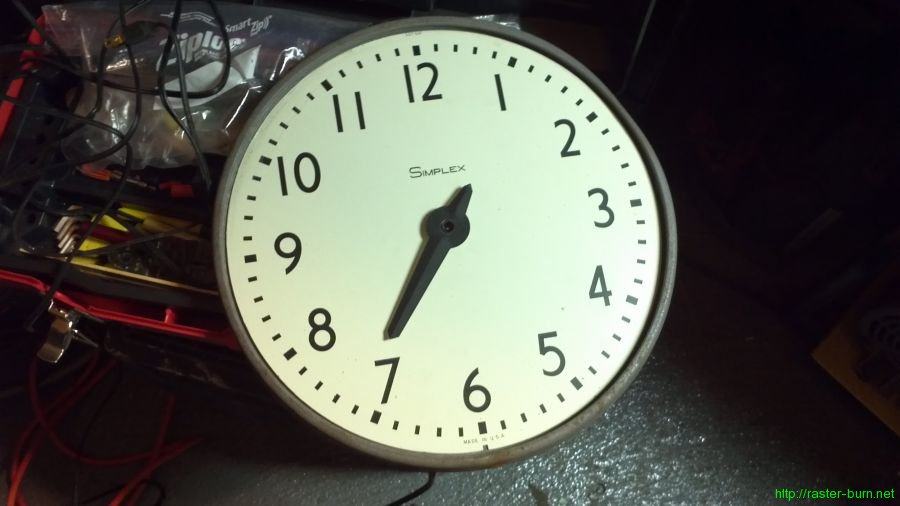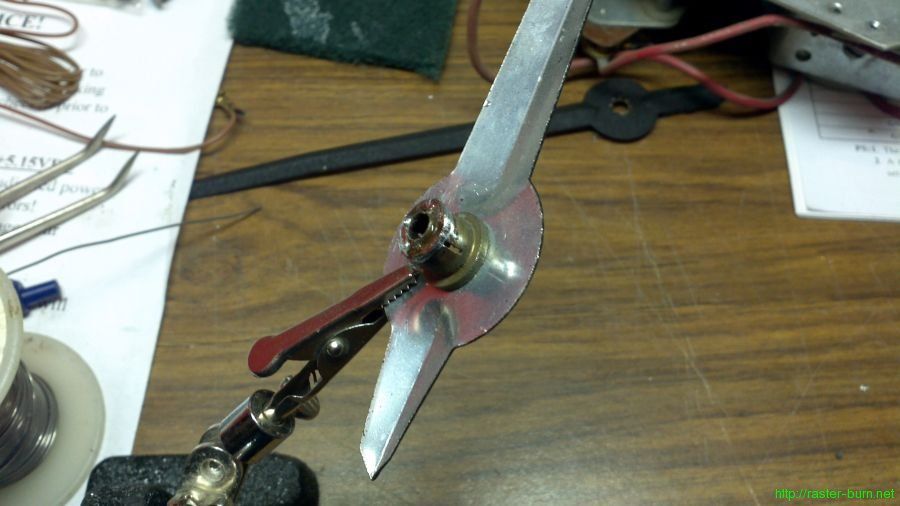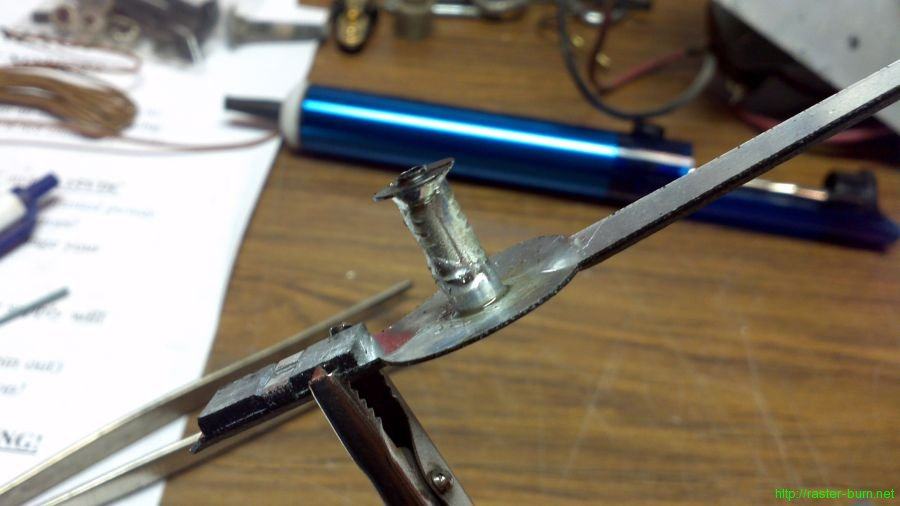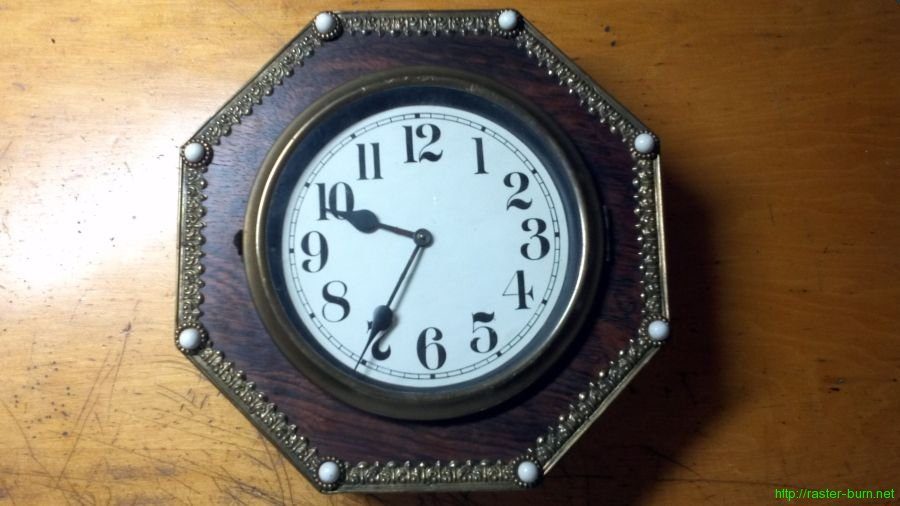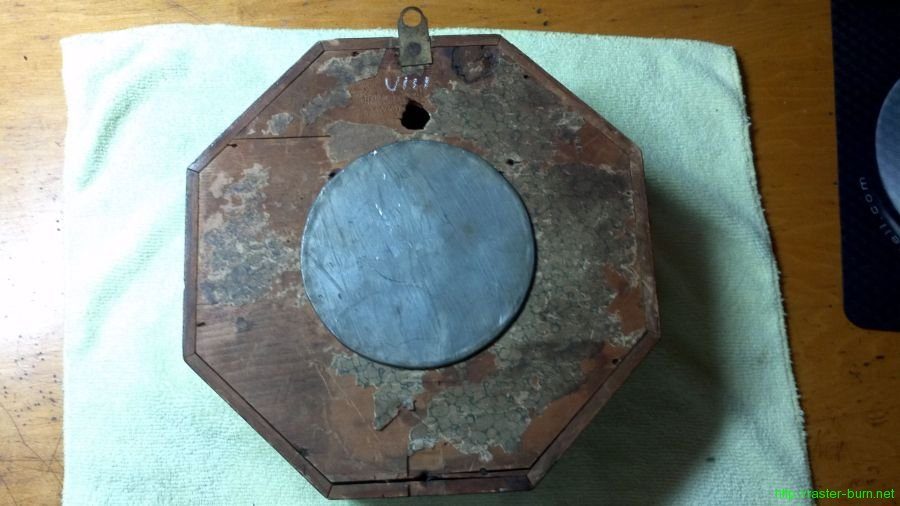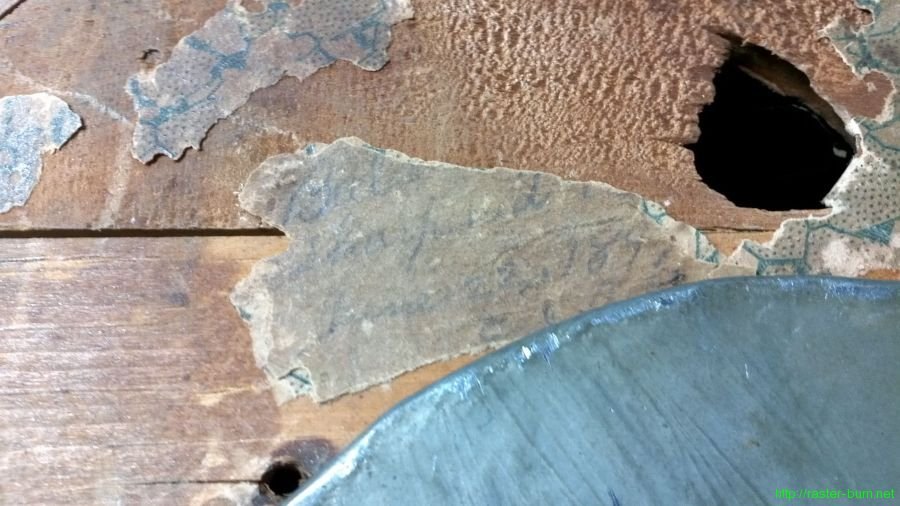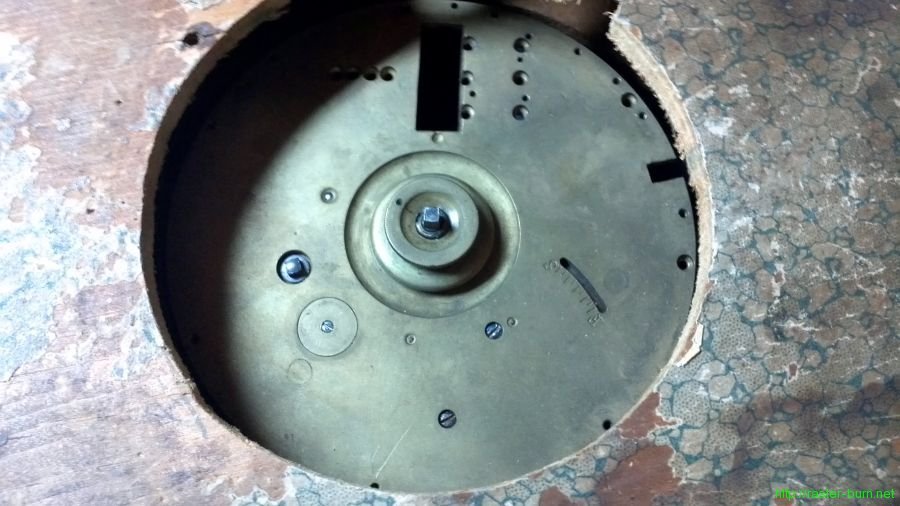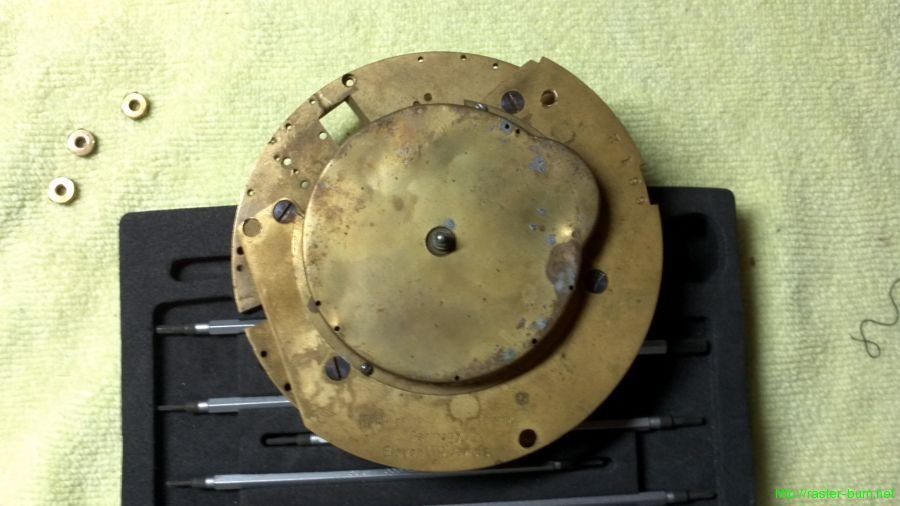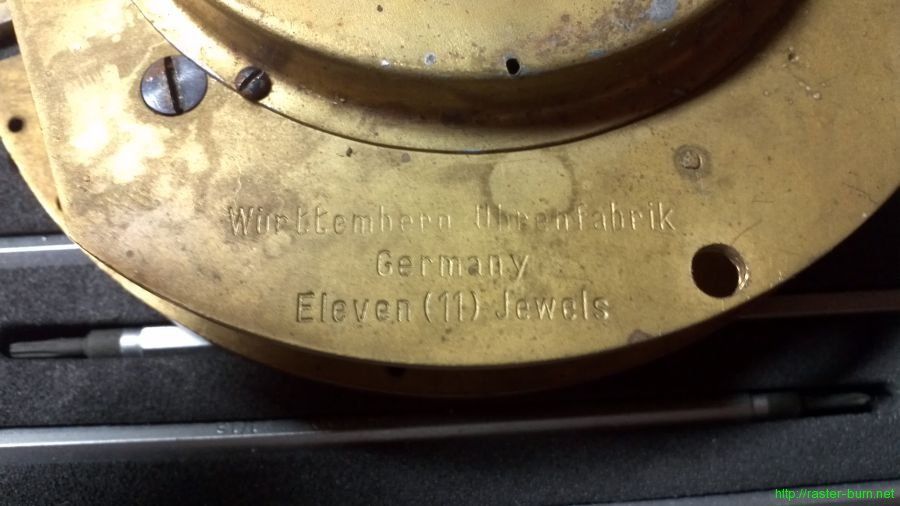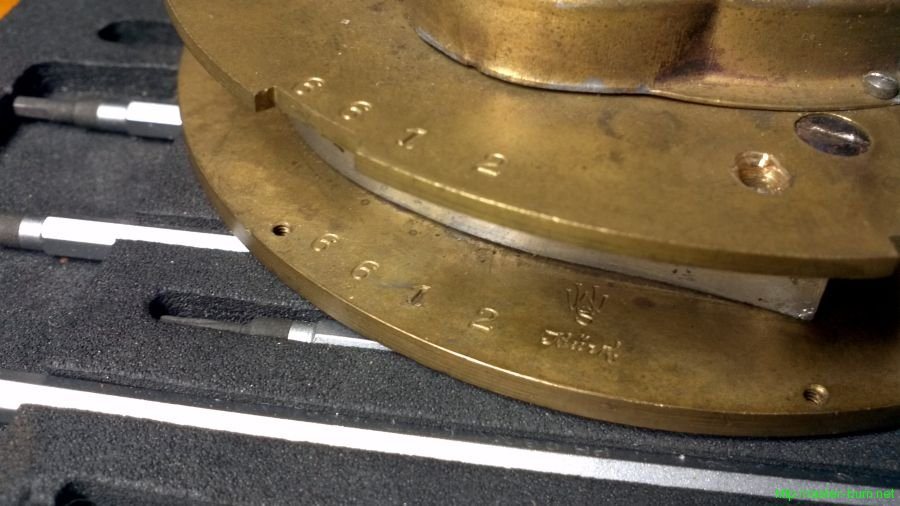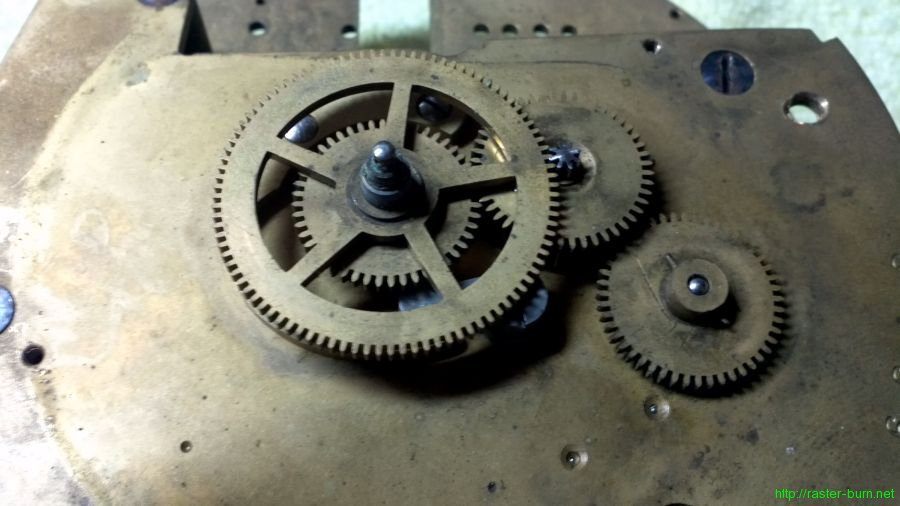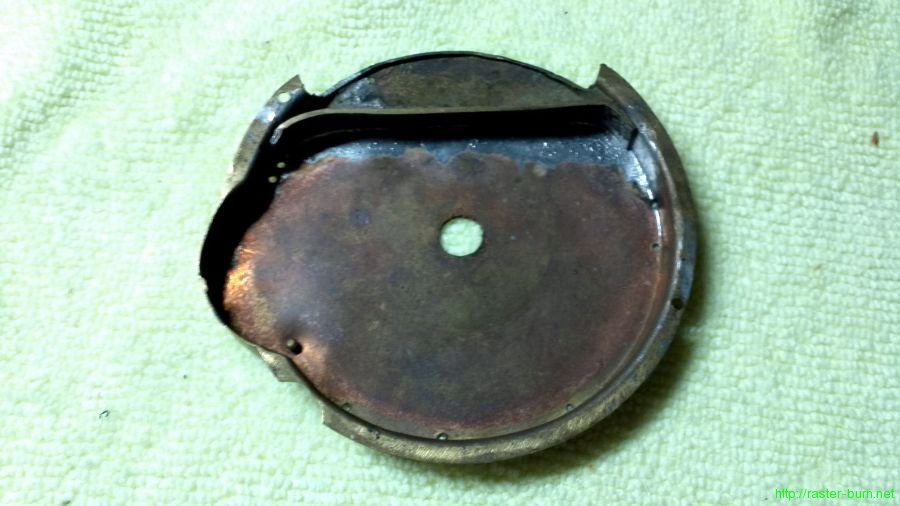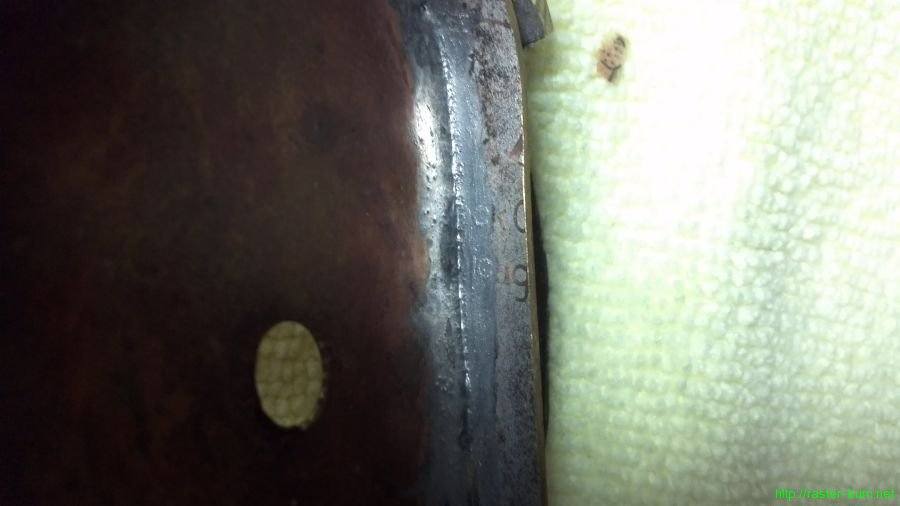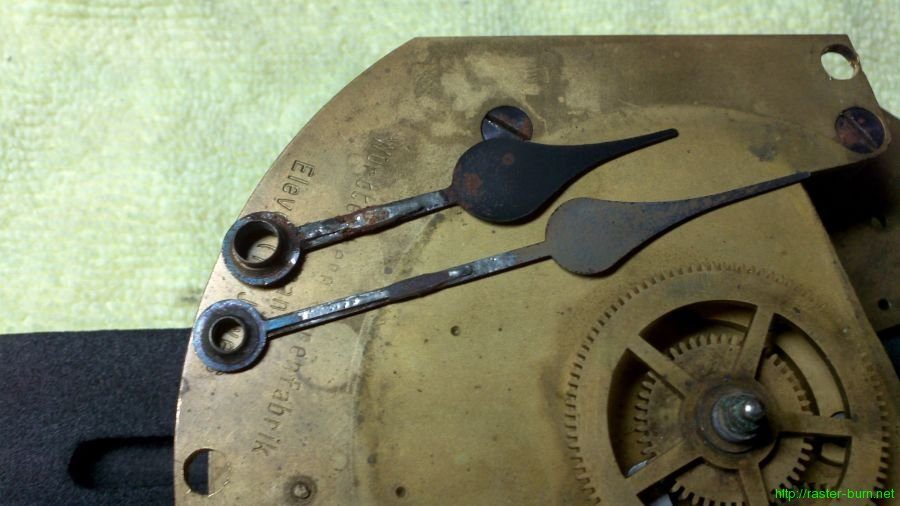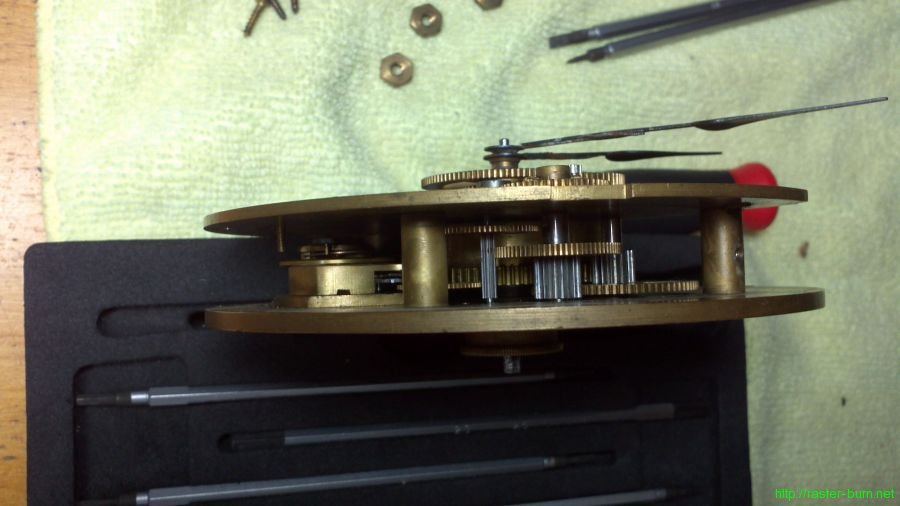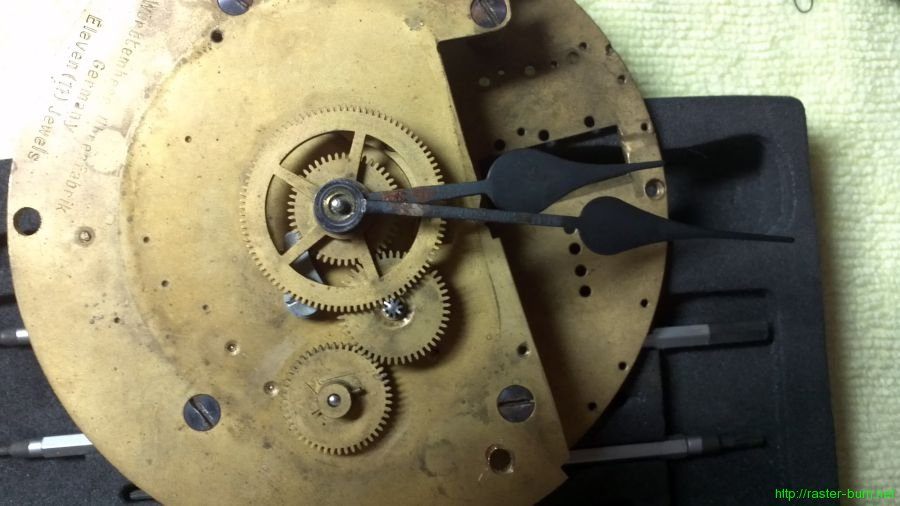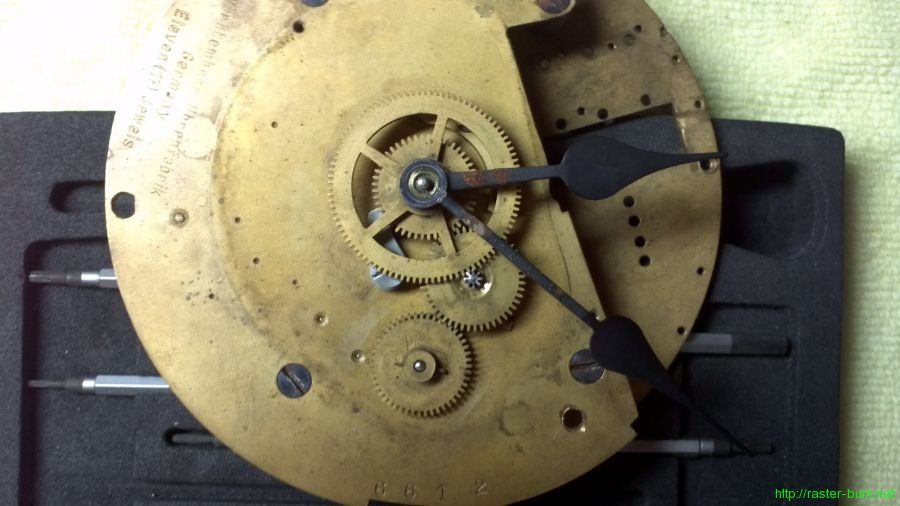I’m always thrilled to find truly old things at thrift stores. This clock was instantly recognizable as being a true antique when I found it on a shelf with a motley assortment of quartz wall clocks and electric clock-radios at the Goodwill on SE Grand. It was priced at $8, ‘as is’. I greedily snatched it up and took it home, feeling like a thief after I checked out and paid the token price.
The only writing on the case is a fragment of a label on the back, with some handwriting in pencil. It looks like…
Ba(l|b)(y|g|s)
Shar(p|f)(unk.)(u w/ umlaut|i)(d|2)
June 22, 189(7|9)
E?&(l|b)(unk.)
On first glance I was worried the movement was incomplete because of all of the vacant screw holes. I think the frame is actually provisioned for a few different variations of the mechanism though, maybe some kind of date display thing because of the ‘window’ in the front plate?
The movement has a few makers markings. ‘Württemberg Uhrenfabrik’ and a stylized ‘WUS’ logo with the text ‘Bürk’ beneath. Based on similar logos found in Mikrolisk’s [1] database I think this movement was made by Württembergische Uhrenfabrik Bürk Söhne [2].
Output shaft and the geartrain for setting the clock.
Backside of the dust cover. Hand formed and soldered modification to make the ‘sealed’ area smaller.
Also interesting is a bit of text visible on the piece used in modifying the dust cover.
The hands are two pieces soldered together as well.
Another dust cover strip on the side removed reveals the rest of the movement.
The spring was wound absurdly tightly already, I gave it a bit of a crank not knowing this and am probably lucky I didn’t break it. I gave the balance wheel a bit of a shove and it actually started right up… It’s been running for two days now. Kinda want it to stop so I can leave it be and avoid putting any more wear on the parts.
I have a feeling the case is not original, though it’s clearly quite old. Not sure how I’d go about further tracing that aspect of it.
[1]: http://www.mikrolisk.de/show.php?site=280&suchwort=W%C3%BCrttembergische&searchWhere=all#sucheMarker
[2]: http://de.wikipedia.org/wiki/W%C3%BCrttembergische_Uhrenfabrik_B%C3%BCrk

